AI companies should understand pricing options and align them with their business goals. This post will explore common AI pricing strategies, the benefits of each approach, and how to implement the right strategy for every business.
Let’s dive in.
Table of Contents
- What is an AI pricing strategy?
- Comparison of AI Pricing Strategy Approaches
- Benefits of Choosing an AI Pricing Strategy
- The Challenges of Implementing AI Pricing
- Examples of Successful AI Pricing Strategies
- How to Choose the Right AI Pricing Strategy
- How to Implement AI-Powered Pricing
- FAQ: AI Pricing Strategy
What is an AI pricing strategy?
An AI pricing strategy determines how an artificial intelligence company charges for its products. AI companies should choose pricing models that support revenue and profitability goals, while remaining competitive within the business’ market segment.
AI companies have several pricing strategy options to choose from, each with distinct advantages depending on your business model, target market, and product maturity. Prices are set based on a variety of factors, including:
- Marketing conditions.
- Customer behavior.
- Competitive forces.
- Volume or usage-based variables.
Customers already have an appetite for AI solutions. Of marketing leaders, 91% say their teams are already using AI, and 43% of sales professionals use AI in their work. Currently, from a marketing and sales standpoint, I’m seeing companies use AI platforms to help them make better data-driven decisions around their pricing strategies.
Pro tips: HubSpot Sales Hub supports flexible payment processing, making it easy for businesses to implement multiple pricing strategies all within a unified platform that connects to the CRM. Dynamic and token-based pricing capabilities are a part of HubSpot’s robust integrations ecosystem.
Pricing Strategies that Work Well for AI Companies
AI companies have different pricing considerations than other businesses. In fact, AI pricing strategies need to factor in computational costs, rapid product evolution, and diverse customer needs. However, when picking an AI pricing strategy, most companies choose one of the following approaches:
- Usage-based pricing.
- Tiered subscription pricing.
- Freemium pricing.
- Value-based pricing.
- Or a hybrid approach.
Usage-Based Pricing
Usage-based payment is an AI pricing strategy that charges customers based on how often they use the AI product. That means users are charged per API call, processing time, tokens used, or data analyzed. This approach is popular among AI companies because it aligns costs with value delivery and scales naturally with customer growth.
Companies like OpenAI and Anthropic use this approach, making AI accessible to startups while capturing revenue from enterprise-scale usage.
Tiered Subscription Pricing
Tiered subscription pricing lets AI companies serve different customer segments with a single product. The companies offer multiple tiers (often, Basic, Professional, and Enterprise). Each tier includes specific feature sets, usage limits, or service levels.
HubSpot is an example of an AI service that offers tier-based pricing. Starter, Pro, and Enterprise all offer different AI-powered features for a set price. Users are not charged based on how many times they use an AI feature.
Tiered subscription pricing provides predictable revenue and helps customers understand exactly what they're getting at each price point.
Pro tip: Setting up tiered pricing structures is straightforward in HubSpot Sales Hub, and Content Hub's drag-and-drop website builder makes it simple to create clear, professional pricing pages that communicate tier differences effectively.
Freemium Models
Providing free access to basic AI capabilities attracts users and demonstrates value before asking for payment. Once customers experience the AI's benefits, businesses can convert them to paid plans with higher limits, advanced features, or priority support. Think, the free version of ChatGPT.
Value-Based Pricing
Value-based pricing ties the cost of using an AI tool to the measurable business outcomes the AI delivers. For example, if an AI solution saves customers $100,000 annually, the company might charge $30,000.
Value-based pricing can be tricky to execute because it requires strong ROI documentation. However, users will know that they’ve gotten value out of the product they’ve paid for.
Hybrid Models
Instead of choosing one AI pricing strategy, Many successful AI companies combine approaches. These businesses may have a base subscription fee plus usage overages, or tiered plans with value-based pricing for enterprise customers.
Hybrid models provide revenue predictability while accommodating different usage patterns and customer preferences. The best pricing strategy depends on the target market, competitive landscape, and how customers prefer to buy AI solutions in a category.
Although I mentioned three pricing strategies, there are several AI pricing models that fall under those umbrellas. Here’s a quick cheat sheet on how models compare across dimensions like predictability, scalability, and customer alignment.
Comparison of AI Pricing Strategy Approaches
|
Model |
How It Works |
Best For |
Pros |
Cons |
Example |
|
Usage-based |
Pay per API call, token, or inference |
APIs, developer platforms |
Scales with customer growth; low barrier to entry |
Risk of “bill shock” |
OpenAI’s token pricing |
|
Subscription |
Flat monthly/annual fee |
SaaS AI products with steady usage |
Predictable revenue; simple to explain |
Misaligned with variable usage |
Jasper AI subscriptions |
|
Freemium |
Free core tier + paid upgrades |
Bottom-up adoption products |
Fast user growth; viral potential |
Risk of over-generosity, high support costs |
Notion AI |
|
Value-/Outcome-based |
Price tied to ROI/outcomes |
Enterprise AI deployments |
High margin if outcomes are clear |
Hard to measure, requires trust |
Healthcare AI preventing readmissions |
|
Performance-based |
Pay per success metric |
Niche AI solutions with clear KPIs |
Aligns incentives; risk-sharing |
High complexity; disputes likely |
Marketing AI charging per qualified lead |
|
Hybrid AI pricing |
Subscription + usage add-ons |
AI suites/platforms |
Balances predictability + fairness |
Harder to explain |
Salesforce Einstein |
|
AI Agent |
Pay per task/outcome handled by agent |
Agentic AI tools |
Reflects real delivered work |
Immature category; evolving |
Customer support agents billed per resolution |
Benefits of Choosing an AI Pricing Strategy
Selecting the right AI pricing strategy is one of the most critical decisions for AI companies. Set the price too high, and customers won’t pay. Set the floor too low, and the business loses money. The right AI pricing model can also help AI businesses increase customer conversions, improve market positioning, and scale more effectively.
Here are some of the key advantages of implementing a strategic pricing approach for your AI company.
Market Alignment
The right pricing strategy ensures an AI solution is positioned appropriately for the target market. Whether an AI solution serves startups with limited budgets or enterprises, the pricing model communicates value and makes buying decisions easier for prospects.
Improved Customer Acquisition
Strategic pricing can accelerate conversions by removing friction from the buying process. For example, usage-based models let customers start small and scale up, while freemium approaches demonstrate value before asking for payment. Pricing that matches how customers want to buy increases the likelihood they'll choose one AI solution over another.
Revenue Predictability
The right pricing structure provides clarity on the business’ revenue model and growth trajectory. Subscription-based pricing offers predictable recurring revenue, while hybrid models balance stability with usage-based upside. This predictability is crucial for forecasting, planning investments, and communicating growth potential to investors.
Pro tip: HubSpot Sales Hub includes forecasting tools that help teams predict revenue across different pricing models, giving sales leaders visibility into pipeline value and expected close rates.
The Challenges of Implementing AI Pricing
Picking the right AI pricing strategy is essential for businesses. Getting the approach wrong can be detrimental. Forecasting revenue and predicting user behavior can be challenging if pricing models don’t match how customers interact with the business.
Here are some challenges businesses may face when implementing AI pricing strategies.
You have too many pricing avenues.
AI companies may decide on one pricing model and change to a different strategy later. Or, a company may create too many tiers for customers to choose from. In both scenarios, having too many pricing plans creates confusion for customers.
Burkan Bur, managing director and SEO Lead at The Ad Firm, notices a common problem during the assessment phase: too many tiers. Bur warns, “Startups providing 6+ pricing avenues are mesmerizing customers and taking longer to close rather than speeding up deployment.”
The site infrastructure doesn’t support the pricing model.
An AI startup may have decided on a pricing strategy. That model may also be completely in synch with customer behavior. However, the product’s site needs to be able to operationally handle processing customer payments and tracking usage.
Shannon King, the VP of Marketing at Stigg.io, says, “The biggest mistake AI startups make when rolling out pricing models is launching pricing without being able to instrument metering and entitlements.”
King notes that, as a result, companies announce token tiers, but can't enforce limits, and model costs move on a weekly basis. “Without having a strong entitlements engine in place, all of this leads to billing chaos and angry customers when costs unexpectedly spike,” King says.
You fail to demonstrate the value of the pricing model.
If AI companies can’t prove that a pricing model leads to customer value, users may leave for an alternative. Customers should understand both what the pricing strategy is and how it benefits them as users.
According to the Boston Consulting Group, value perception is an essential part of customer buy-in. In fact, sellers can foster goodwill by holding or lowering prices on important products and categories. It is important to be transparent with your customers about the factors that influence pricing.
Pro tip: Building pricing pages shouldn't be the hard part. With HubSpot's free CMS tool, teams can quickly create pricing pages that clearly communicate value propositions and pricing structures.
Examples of Successful AI Pricing Strategies
Integrating AI into pricing strategies can foster better customer satisfaction, increase sales, and improve your competitive edge – and it’s already showing success while being leveraged by major companies.
Here are a few examples of AI pricing strategies you will likely recognize.
OpenAI: Usage-based Pricing for APIs
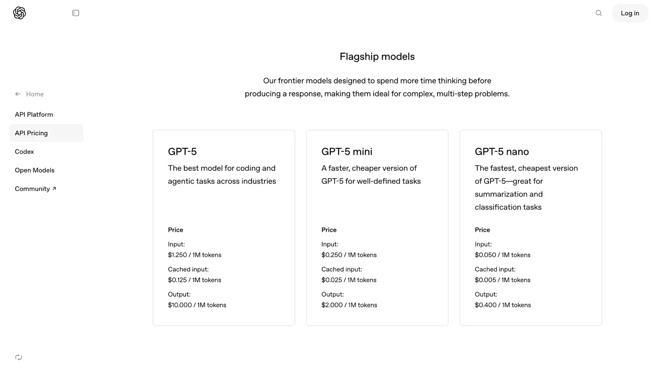
OpenAI’s API popularized usage-based pricing with per-token billing. Tokens allowed developers to experiment on a budget while scaling revenue with enterprise adoption. The shift to model-specific pricing (GPT-3.5 vs. GPT-4) further segmented value and willingness-to-pay.
HubSpot: Tiered Subscription Pricing
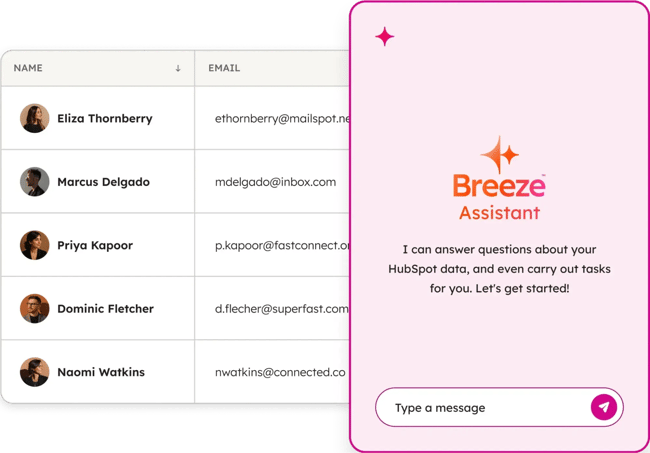
HubSpot is a prime example of an AI-powered SaaS platform with tiered subscription pricing. Its product ecosystem follows a clear value ladder: free, Starter, Professional, and Enterprise tiers. Each level progressively unlocks more powerful tools and AI capabilities.
At the lower tiers, users get access to basic CRM functions and generative AI tools like automated email and blog writing. As they move up, the Professional and Enterprise tiers introduce advanced features such as predictive lead scoring, intelligent automation, and custom GPT integrations. This structure allows businesses to start small and scale their AI sophistication as their needs and budgets grow.
ElevenLabs: Freemium Pricing
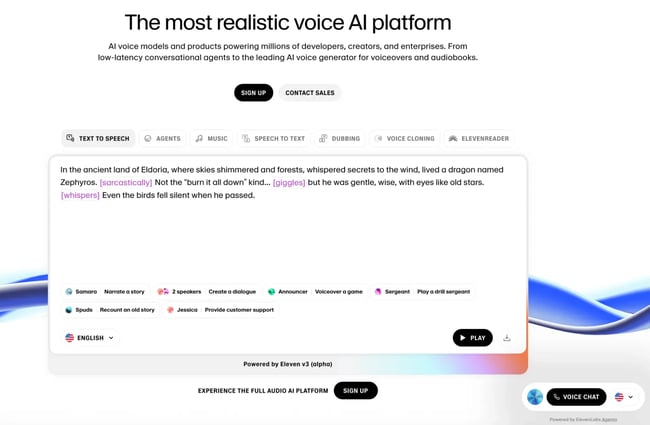
Eleven Labs offers powerful AI voice tools that attract users with a free entry point. In fact, customers get 10 minutes of text-to-speech conversions a month at no cost. However, if users want advanced capabilities, like more minutes or a larger number of projects, they’ll need to pay for upgrades.
Offering a low barrier to entry helps Eleven Labs build awareness and user trust while showcasing the quality of its AI voice solution. Once users get used to using the technology, they’re more likely to upgrade.
Salesforce Einstein: Hybrid AI pricing for enterprise
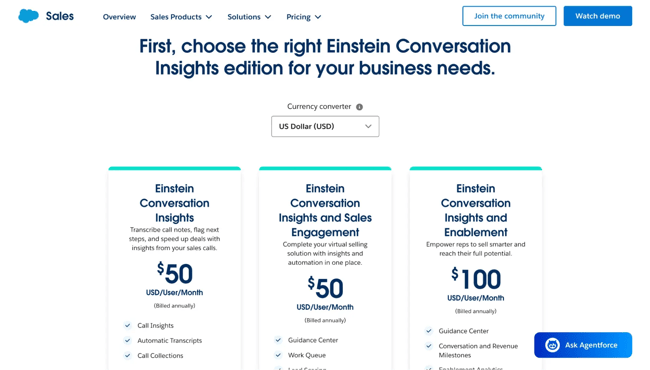
Salesforce uses a hybrid approach that combines its core subscription pricing with consumption-based credits for AI features like Einstein GPT. This structure gives enterprises the predictability of SaaS subscriptions while allowing them to scale AI usage flexibly.
For buyers, the hybrid approach reduces budget friction, and for Salesforce, it unlocks expansion revenue without sacrificing long-term contract stability.
How to Choose the Right AI Pricing Strategy
Choosing the right AI pricing strategy is about finding the structure. Some models work great for steady, predictable usage, while others are perfect for when demand spikes or outcomes are easy to measure.
Before choosing your pricing model, consider these three primary factors:
- Business goals: Does the team want predictable revenue (subscription), viral adoption (freemium), or margin-maximization (outcome-based)?
- Customer usage patterns: Is usage steady or highly variable? Usage-based models may fit APIs, while hybrid works better for platforms.
- Value delivered vs. cost to serve: Are outcomes measurable and defensible? If so, outcome- or performance-based may be viable.
Remember to steer clear of these common traps that can quickly erode margins and confuse customers.
- Overly generous free tiers: Sometimes, being too generous creates costs without conversion.
- Choosing the wrong value metric: If customers expect to pay per document, don’t charge per token — align pricing with how they naturally measure value.
- Ignoring communication: Confusing pricing pages will kill adoption.
- Copying competitors blindly: What works for a competitor might not work for a different business. Validate customer fit, then choose a pricing model that works for the audience.
How to Implement AI-Powered Pricing
Rolling out an AI pricing strategy isn’t just about updating a checkout page. It’s about putting the right systems, processes, and people in place so the model works for the business and customers.
Here’s a roadmap teams can follow.
Step 1: Assessment
Start with a clear picture of how customers use the product and what it costs you to serve them.
- Audit current usage data to see patterns in volume, peaks, and drop-offs.
- Map out AI costs, including compute resources, support, and storage.
- Gather willingness-to-pay signals through surveys or small pilot programs.
- Pick the right value metric (tokens, documents, tasks, or agent hours).
- Make sure the data sources the team needs — like sales history, billing logs, and CPQ systems — are ready to connect.
Step 2: Tool Selection
Next, choose the right https://blog.hubspot.com/marketing/ai-tools-for-ecommerce to make the pricing model possible. Look for platforms that simplify metering, billing, and entitlements.
Consider:
- Orb, Metronome, or Tofu for usage-based billing.
- Stripe, Chargebee, or Recurly for subscriptions and hybrid billing.
- Zuora, Maxio for enterprise-grade CPQ and RevOps.
- HubSpot AI Studio, if you want built-in dynamic pricing workflows.
Pro tip: Pick a tool that connects with the team’s CRM and finance systems. If systems don’t talk to each other, organizations end up with mismatched quotes, invoices, and dashboards.
Pro tip: HubSpot's ecosystem includes over 1,500 integrations in the App Marketplace. These offerings make it easy to connect billing platforms, payment processors, and analytics tools directly to the HubSpot CRM, ensuring pricing data flows seamlessly across systems.
Step 3: Testing
Before going live, test the pricing model carefully.
- Configure workflows, entitlements, and rules.
- Train algorithms on real customer data and competitor benchmarks.
- Run pilots with a small group of customers first.
- Grandfather existing customers to avoid churn.
- A/B test pricing pages and packaging to see what drives conversions.
Step 4: Optimization
Once live, treat pricing as a system you improve over time.
- Track conversion, retention, ARPU/ARPA, and overage rates.
- Watch for early warning signs like billing disputes or support tickets tied to confusion.
- Review pricing every 6-12 months to stay ahead of changing compute costs and customer expectations.
- Build pricing reviews into quarterly planning so the team is always iterating.
Pro tip: King also adds, “The most important metric is revenue per active user who actually gets value from your AI. When that number goes up while you're still making at least 70% profit after AI costs, you know your pricing is aligned to value rather than vanity.”
Step 5: Enablement
Finally, set the team and customers up for success.
- Train sales and support teams to explain pricing clearly.
- Give them scripts and FAQs for common objections.
- Create customer-facing calculators or examples to show how billing works.
- Document rules internally so pricing stays consistent as you scale.
Don’t just train sales teams on the numbers — give them stories. When reps can explain why pricing is structured around customer value, they build trust faster and handle objections with ease. Pair enablement materials with live role-plays so the first tough pricing conversation doesn’t happen in front of a prospect.
Pro tip: Teams can use HubSpot Breeze to quickly create enablement materials like FAQ documents and pricing calculators. This AI agent can streamline the process of getting sales teams ready to discuss pricing confidently.
FAQ: AI Pricing Strategy
How do I choose the right AI pricing tool for my business?
Teams can choose the right AI pricing tool by matching it to the current pricing model and scale. If teams have usage-based pricing, look for metering and billing platforms like Orb or Metronome. For subscriptions or hybrid models, Stripe, Chargebee, or Zuora are good fits.
A customer platform like HubSpot CRM is especially valuable when implementing AI-pricing because it integrates billing and sales workflows, keeping quotes, invoices, and customer data consistent.
How do successful companies price their AI products?
Successful companies price their AI products by aligning pricing with customer value and usage. OpenAI charges by token, Salesforce combines subscriptions with consumption credits, and Amazon uses dynamic pricing that updates in real time. Many HubSpot customers follow a similar approach, layering AI add-ons on top of core subscriptions to keep base revenue predictable while scaling usage-based growth.
Should I offer a freemium model for my AI product?
Yes, you should offer a freemium model if your goal is rapid adoption and data collection, but only if your costs are predictable and manageable. Unlike traditional SaaS, every AI query consumes compute resources. That makes credit limits, upgrade prompts, and real-time consumption tracking essential. HubSpot’s own free CRM is a good example of how freemium can fuel adoption and create a pipeline for upgrades, but if AI costs are volatile, time-limited trials may be safer.
TL;DR: AI Pricing Strategy
- An AI pricing strategy defines how businesses capture value for AI products and services.
- Usage-based works well for APIs and developers; subscription for SaaS; hybrid for platforms; outcome- and performance-based when ROI is clear.
- OpenAI, Salesforce, Amazon, and Uber illustrate how models evolve with customer adoption and market dynamics.
- Implementation requires four phases: assessment, tool selection, testing, and optimization.
- Avoid pitfalls like overgenerous free tiers, unclear value metrics, and blind competitor copying.
Gain a competitive edge with an AI pricing strategy.
Choosing the right pricing strategy is crucial for AI companies looking to maximize profitability and market position. Yet succeeding requires considering factors like cost structure, target customer segments, competitive landscape, and the unique value the AI solution delivers.
Understanding the pricing model from the start is crucial, as is monitoring its effectiveness over time. Be prepared to iterate as the team gathers data on customer acquisition costs, lifetime value, and willingness to pay.
I also recommend that, before you implement your pricing strategy, you create a communications plan. Send that information to your prospects, clients, and partners to explain how your pricing model works and the value they‘ll receive. Make sure your sales team and other internal stakeholders are up to speed on it, too — they’ll be the ones defending and explaining your pricing decisions in the field.
Artificial Intelligence
.png?width=112&height=112&name=Image%20Hackathon%20%E2%80%93%20Vertical%20(45).png)
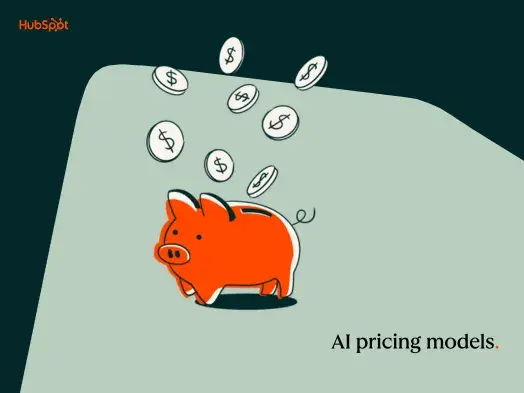
.png)

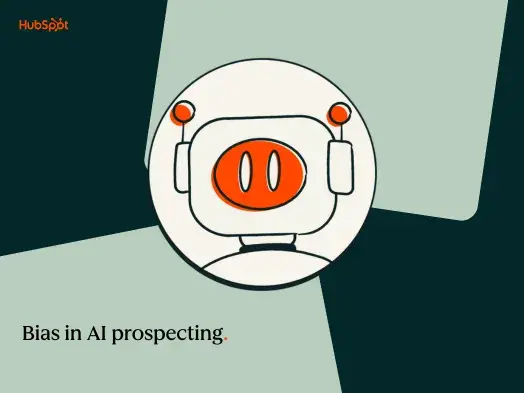
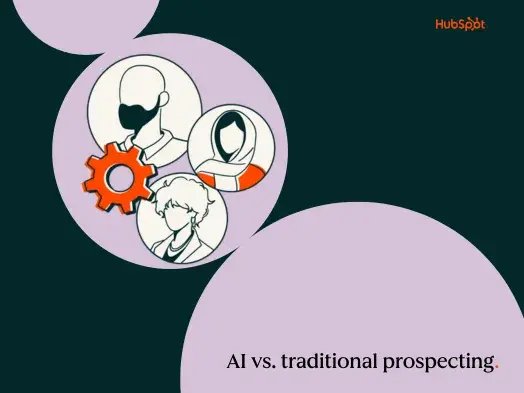

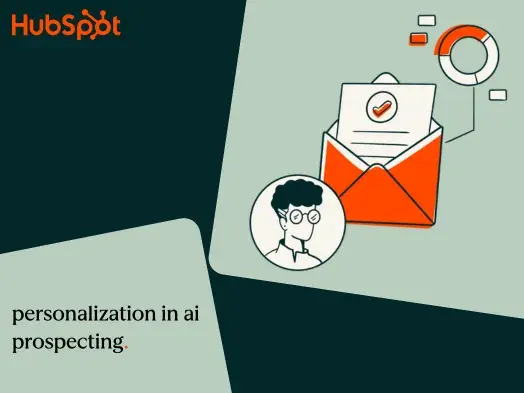

![13 Ways AI Can Benefit Your Business [+ New Data and Gen AI Prompts]](https://53.fs1.hubspotusercontent-na1.net/hubfs/53/benefits-of-business-in-ai-1-20241113-8880073.webp)


